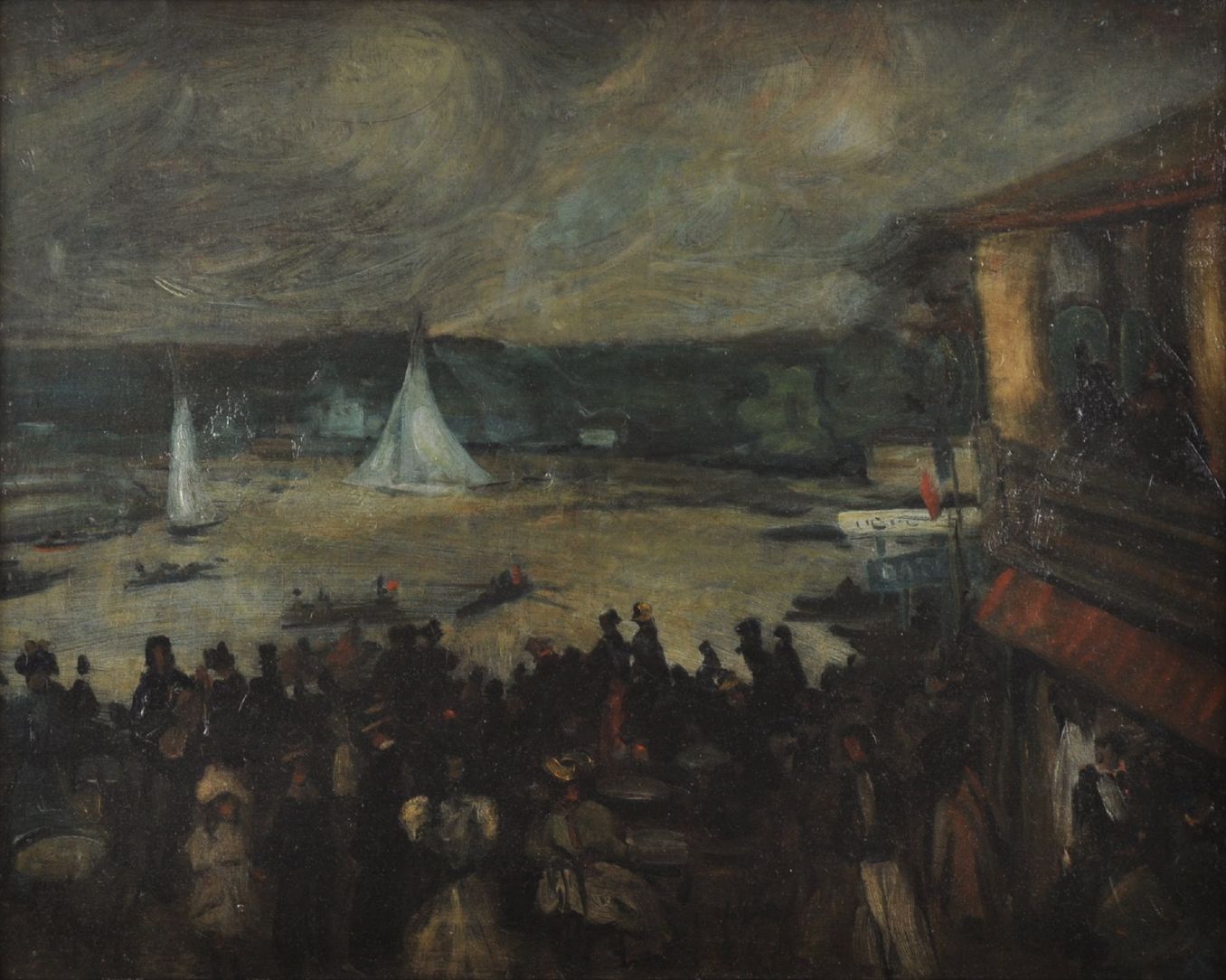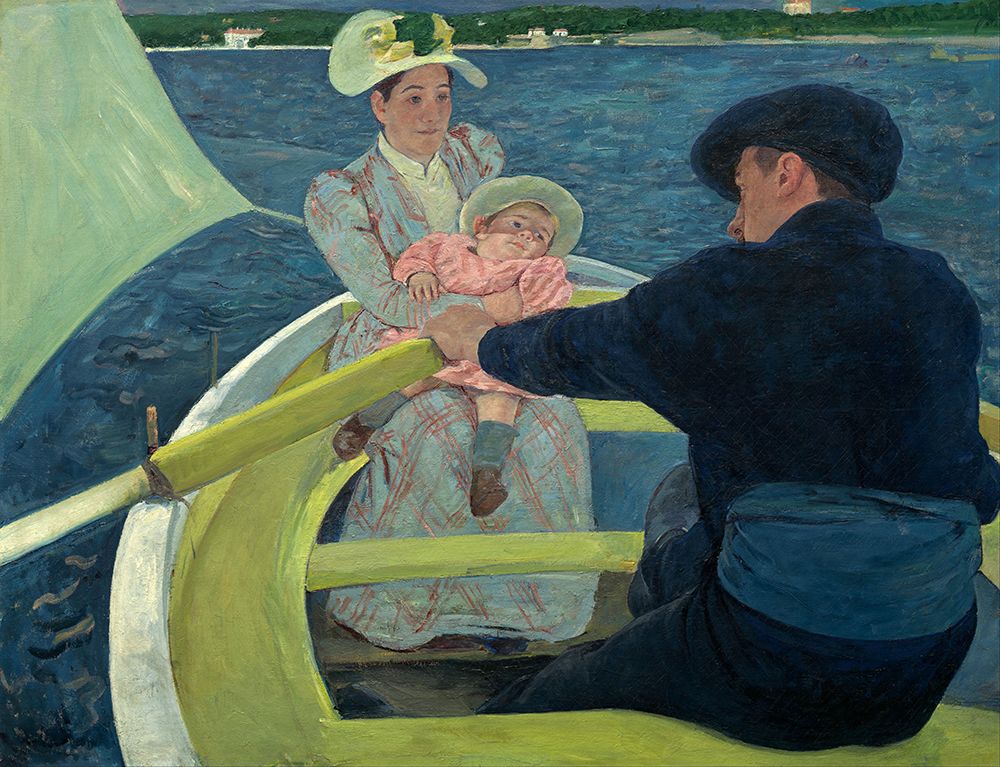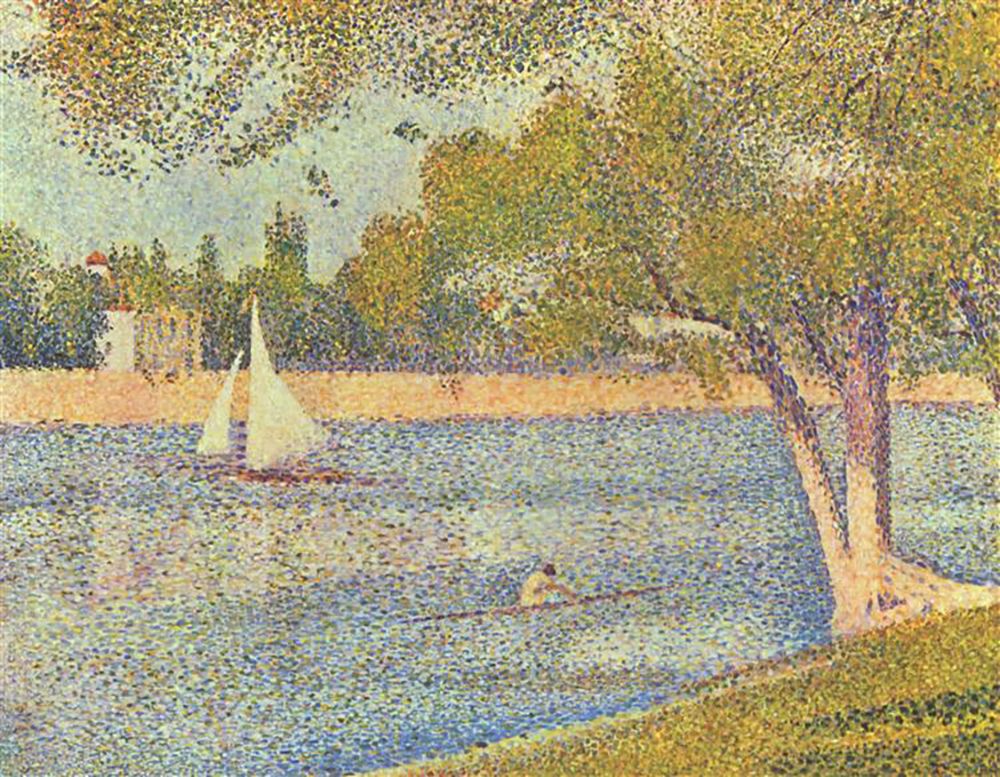William James Glackens (1870–1938)
Sailing Boats, Paris, c. 1895
Oil on canvas
McMullen Museum of Art, Boston College, Gift of Alexandria & Michael N. Altman P’22, ’24, ’26, 2019.5

John McCoy
Assistant Director, McMullen Museum

While William Glackens is considered one of the founders of the Ashcan school of American art, only a fraction of his output falls under that style. The Ashcan school was a group of early twentieth-century American realist painters who depicted common scenes of life in New York city’s poorer neighborhoods. The painter George Bellows, also represented in this gallery, is associated with this school as well. Glackens’s early output often featured dark, somber palettes to accompany his urban, documentarian subjects. But after 1910 and for the rest of his life, his palette became colorful and idiosyncratic, inspired by Pierre-Auguste Renoir (1841–1919), and his subject matter turned to middle-class leisure, landscapes, and nudes.
Sailing Boats, Paris, was painted when Glackens was twenty-five. The young artist, who had been working as a newspaper illustrator and taking evening courses at the Pennsylvania Academy of the Fine Arts, traveled to Europe in 1895. There he studied Old Masters in Holland and new works by impressionists and post-impressionists in France. In Paris he spent the following year renting a studio with fellow Ashcan painter Robert Henri, who was also immersing himself in new painting styles. It was during this stay that Glackens painted Sailing Boats, which shows the strong influence of the artists he was studying, with its lively overlapping brush strokes, subjective colors, and its abstracted depiction of leisure. The dark but saturated colors make the time and weather of the scene ambiguous, and anticipate those that Glackens would use in his yet-to-come Ashcan works.
To a viewer today, scenes of boating in fin-de-siècle Paris may seem nostalgic and quaint. Glackens’s intention, however, was to depict a commonplace, contemporary activity. By the 1890s, pleasure-boating was no longer limited to gentry and had been adopted by the growing middle class; the Seine was often crowded with small, relatively inexpensive craft. Boating scenes were favorites of impressionists and post-impressionists (see images). In this painting, Glackens takes an expansive view of both river and shoreline, teeming with dozens of figures. The two central sailboats are sloops, the most basic (and economical) of sailing craft, having two sails and a single mast. Ashore in the foreground, the clientele of a riverside cafe dine both indoors and out, seated at circular tables. The mass of unidentifiable, abstract figures spills into the middle ground where they press against the riverbank, many watching the boats. The lighting makes it unclear if this is a day or night scene, creating a dreamlike space.


